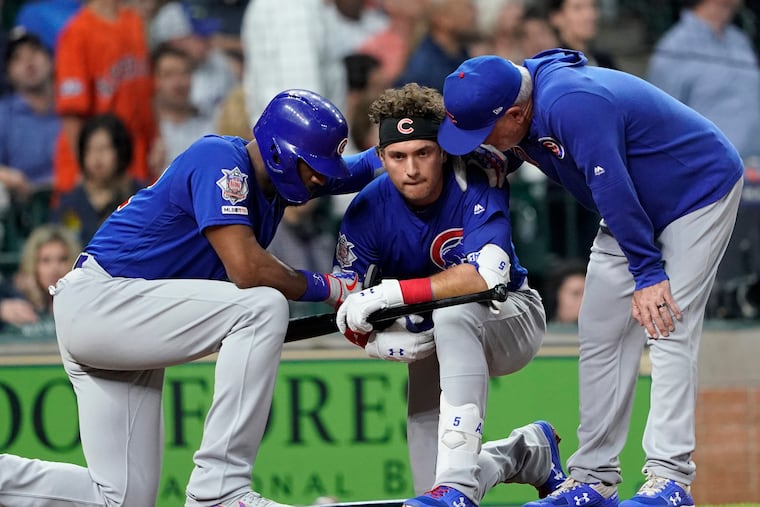Baseball netting must increase as attention spans decrease | Bob Ford
Fans must be protected from themselves.

Before the start of the 2018 season, major-league baseball instructed its 30 teams to have protective netting installed that would at a minimum extend from the backstop to the end of each dugout.
All teams did that, and some did even more, adding a section or two of protection farther down the first and third base lines. The reasons were obvious. Fans were being injured by foul balls at a greater rate than ever before. The baseball officials who made the decision said that players are bigger and stronger than in the past — even though performance-enhancing drugs have been (wink-wink) “eliminated” — and baseballs are entering the stands at the highest velocities in history.
They failed to add another salient point, which is that no one watches the damn game anymore. If you find yourself at a boring movie and decide to check your Twitter mentions or scroll through Facebook to see what those wacky Russians are up to this time, there is very little chance the creepy neighbor with the chain saw will leap from the screen and give you a haircut while your attention is elsewhere. At a baseball game, the stakes are a little higher.
Baseball officials are not, however, going to confess that some of their safety measures are taken not to protect the fans from foul balls, but to protect the fans from themselves. Were Bart Giamatti, that poet of baseball’s timeless, verdant fields, still with us, I think even he would occasionally turn away from the endless procession of uppercuts and strikeouts to see if he had any new Instagram likes.
It is very likely the netting will be extended again soon, perhaps in time for the opening of next season. Bad injuries are bad publicity, and baseball had a ton of it last week when a foul ball in Houston’s Minute Maid Park struck a 4-year-old girl and Cubs batter Albert Almora Jr. was reduced to tears on the field after it happened. Bad optics for the game, and the less of that the better for a pastime that frequently seems past its time.
In the recesses of its corporate mind, baseball might also be interested in reducing any possible liability exposure. There is a warning announced before each game, and another printed on the back of tickets, concerning the “risk and danger inherent to the game” from foul balls, broken bats, errant throws and the fielder who could potentially land in one’s lap. Those warnings are on NASCAR tickets, too, but when Kyle Larson’s No. 32 Camaro went airborne at Daytona in 2013, pierced the catchfence, and sent debris into the stands, lawsuits followed and were successful.
The words on the back of the ticket didn’t protect the 4-year-old with the yellow ribbon in her hair last week, and they won’t protect the dude checking his fantasy league standings. Baseball is certainly being risk-averse as it moves to add more netting — most observers believe it will extend to the foul poles after the next jump — but it is also in the best interests of the game, because just as its players have changed, so have its customers.
In a very real way, the necessity is a shame. There is a connection at baseball parks between fans and field that is special and timeless, and any barrier between the two means something has been lost. Hockey fans adjusted and, since the netting began to creep down the foul lines, so have baseball fans. But adjusting to a new environment is not the same as having the old one.
It would be nice if everyone paid attention to every pitch and were aware of the people around them who can’t protect themselves. That’s not reality, though. If drivers aren’t fascinated enough by what is taking place at high speed on the highway to keep their eyes on it, then what chance does a three-hour baseball game have?
So, the nets have to go up. They will probably go higher as well as longer and soon it will be hard to remember what it was like before. It isn’t necessarily because baseball is too boring — although a case could be made for that. It is really because people have become too easily bored. Even if you fixed the game, good luck with the other one.